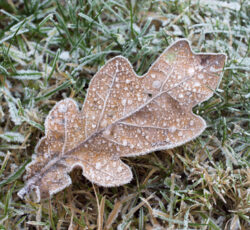 As the winter months approach, it’s easy to assume that lawn care is no longer necessary. However, taking care of your lawn during the winter is essential to ensure its health and preserve its beauty. While grass growth slows down in colder temperatures, there are still several best practices you can follow to maintain a healthy and preserved lawn. Let’s explore some of the key elements of winter lawn care.
As the winter months approach, it’s easy to assume that lawn care is no longer necessary. However, taking care of your lawn during the winter is essential to ensure its health and preserve its beauty. While grass growth slows down in colder temperatures, there are still several best practices you can follow to maintain a healthy and preserved lawn. Let’s explore some of the key elements of winter lawn care.
Mowing:
As the growth rate of grass decreases during winter, adjusting your mowing routine becomes crucial. It’s recommended to gradually reduce the mowing height of your lawn in the weeks leading up to winter. This helps prevent the grass from becoming excessively long and susceptible to snow mold and other diseases. Set your mower blade to a height of around 2-2.5 inches for warm-season grasses and 2.5-3 inches for cool-season grasses. However, avoid cutting your grass too short, as this can damage the crown and roots.
Removing Leaves:
Although it’s tempting to leave fallen leaves on the lawn during winter, it’s important to remove them regularly. A thick layer of leaves can suffocate the grass and prevent sunlight and air from reaching it. Use a rake or leaf blower to remove the leaves and keep your lawn clear. If you have a large lawn, consider using a mulching mower that chops the leaves into small pieces and adds organic matter back into the soil.
Aerating:
Aeration is a vital practice in winter lawn care. It involves creating small holes in the soil to improve air circulation, reduce compaction, and enhance water and nutrient absorption. Aeration also helps alleviate thatch buildup, a layer of dead grass and other organic material that can hinder the growth of healthy grass. You can rent an aerator or hire a professional landscaper to perform this task. Aim to aerate your lawn once every one to three years, depending on the condition of your soil.
Fertilizing:
Applying fertilizer in late fall is an excellent way to give your lawn a boost before winter sets in. Use a slow-release or winterizer fertilizer with a high potassium (potash) content. Potassium helps strengthen the grass’s roots and improves its resistance to cold temperatures, diseases, and stress. Avoid using quick-release fertilizers during winter, as they can cause rapid growth that is susceptible to damage. Follow the manufacturer’s instructions for the appropriate application rate.
Watering:
Although it may seem counterintuitive, watering your lawn during the winter is still important. While grass growth slows down, the roots of your lawn still need moisture to survive. Water your lawn deeply and infrequently to ensure the roots receive adequate hydration. Watering once every two to three weeks, depending on local conditions, is usually sufficient. Avoid watering on frozen or snow-covered ground, as the water will not be absorbed effectively.
Weed Control:
Winter is a great time to tackle pesky weeds in your lawn. Weeds such as dandelions and clover often take advantage of the dormant grass to establish themselves. Use a herbicide specifically designed for winter weed control to eliminate them. It’s important to follow the instructions on the herbicide carefully and avoid spraying on windy or rainy days. Ensure the temperature is above freezing for at least 24 hours after application, as this allows the herbicide to work effectively.
Protecting Against Foot Traffic:
Winter can be particularly challenging for lawns, especially when it comes to foot traffic. Frozen or partially thawed grass is easily damaged when walked on. Try to redirect foot traffic to designated pathways or use barriers to protect vulnerable areas. If you need to perform necessary maintenance tasks on your lawn during winter, place plywood or other protective measures on the ground to distribute the weight and minimize damage.
Summary
Taking care of your lawn during the winter is essential to preserve its health and beauty. By following these best practices, including adjusting your mowing routine, removing leaves, aerating, fertilizing, watering appropriately, controlling weeds, and protecting against foot traffic, you can ensure a healthy and vibrant lawn even during the colder months. Remember that proper winter lawn care sets the foundation for a lush and thriving lawn when spring arrives.
Need a Landscape Design Company in Sparta Township, NJ?
Your landscape can be designed and maintained by the professionals at The Cutting Edge Landscaping. By creating your ideal landscape design, we’ll turn your landscaping vision into a reality. No matter if you want to modify your current landscape or build a brand-new one from scratch, we’ll handle the full project for you from beginning to end. We began operations in 2000 and became a corporation in 2005. We are federally authorized, fully insured, and registered with Sussex County, New Jersey. We hold licenses from the New Jersey Department of Environmental Protection, the New Jersey Landscape Contractors Association, and the Department of the Attorney General as home improvement contractors. Contact us today to learn more about what we can do for you!

